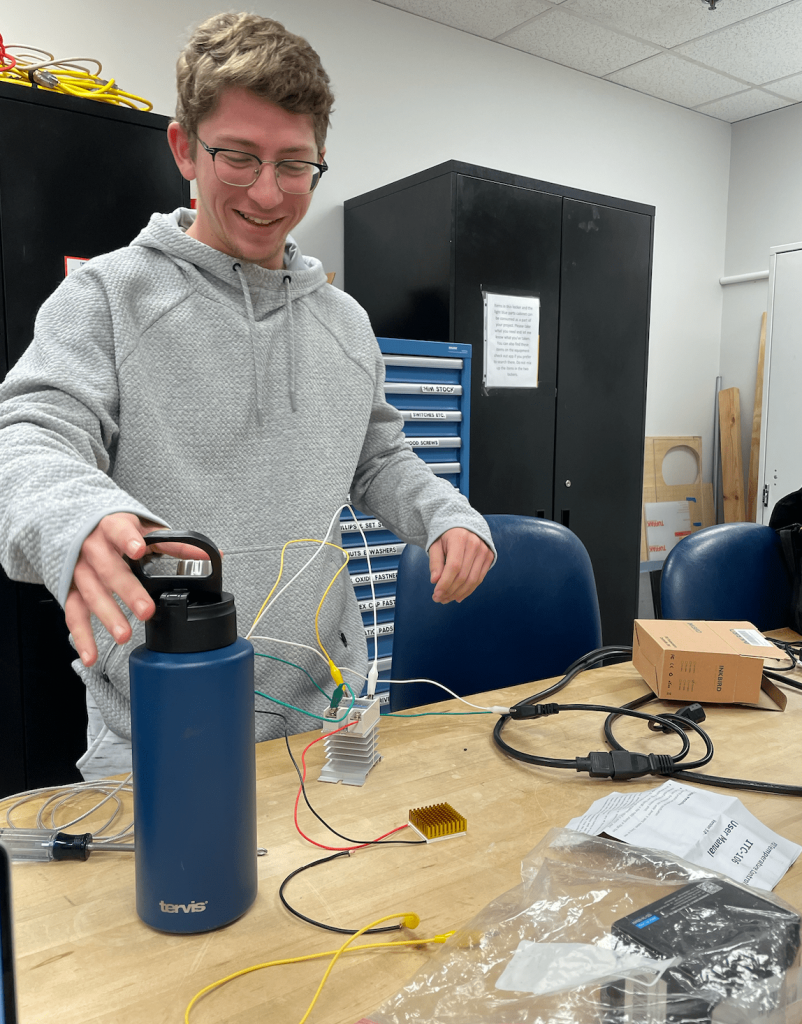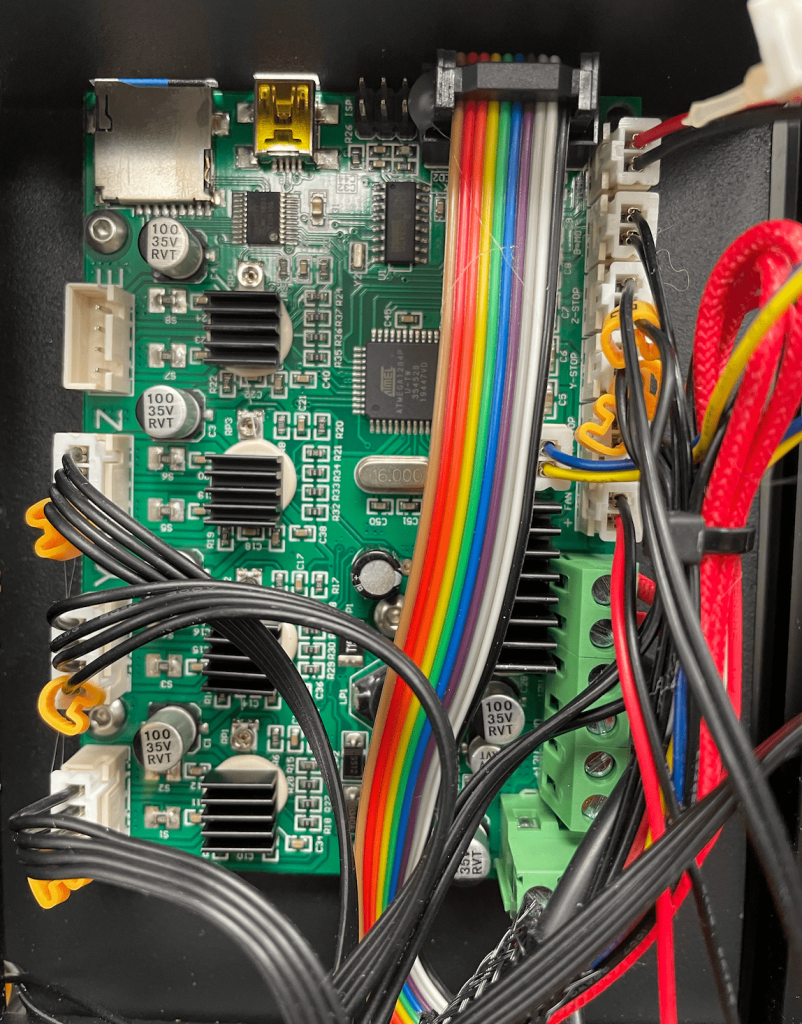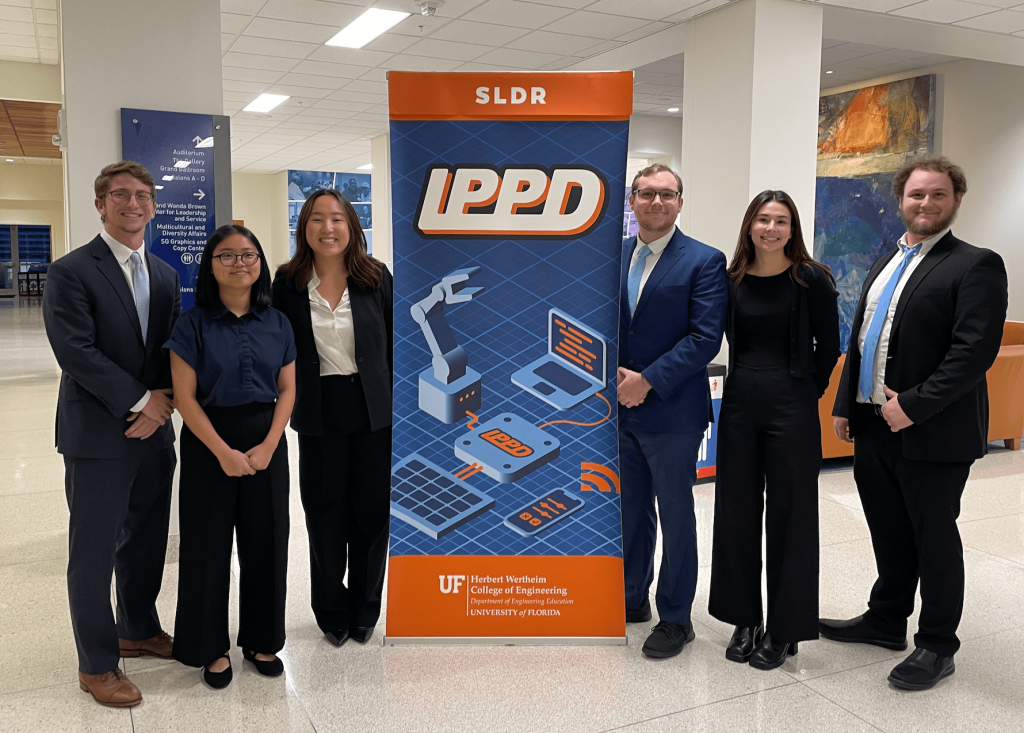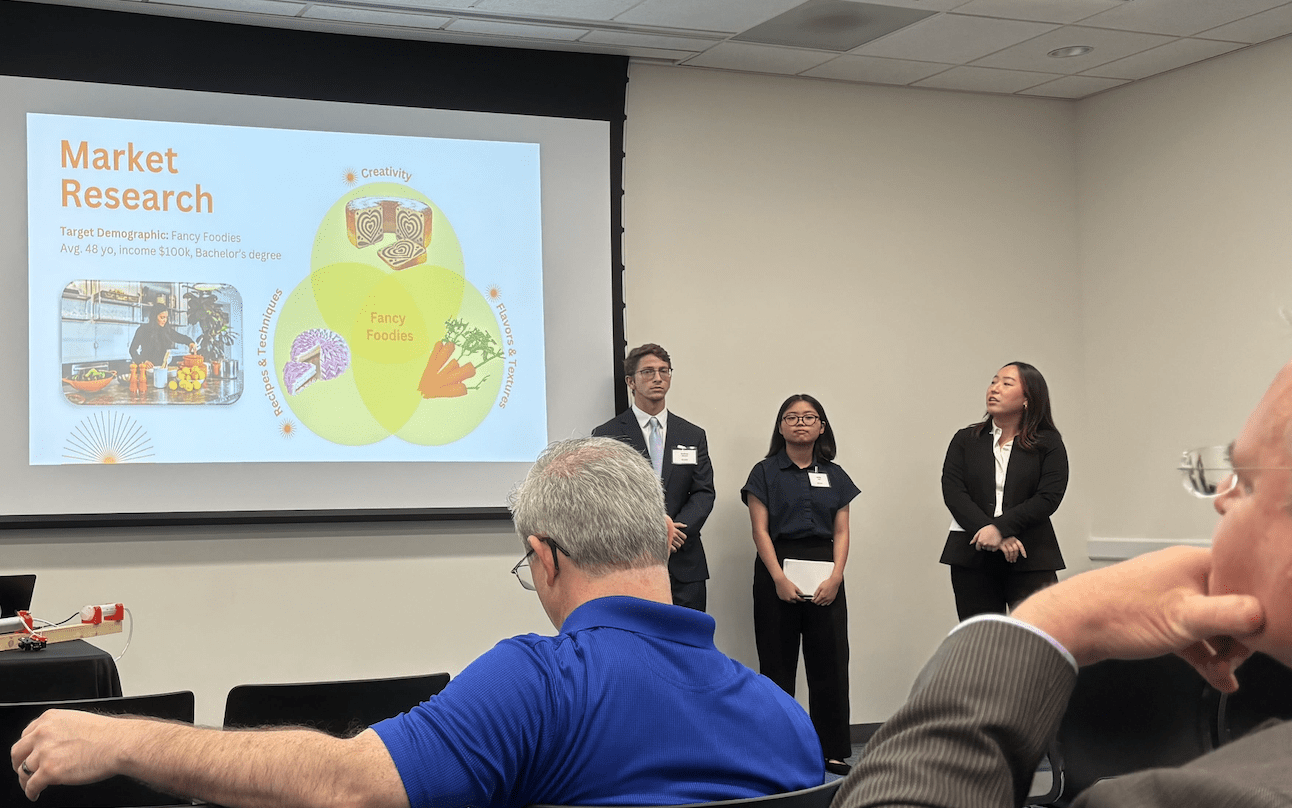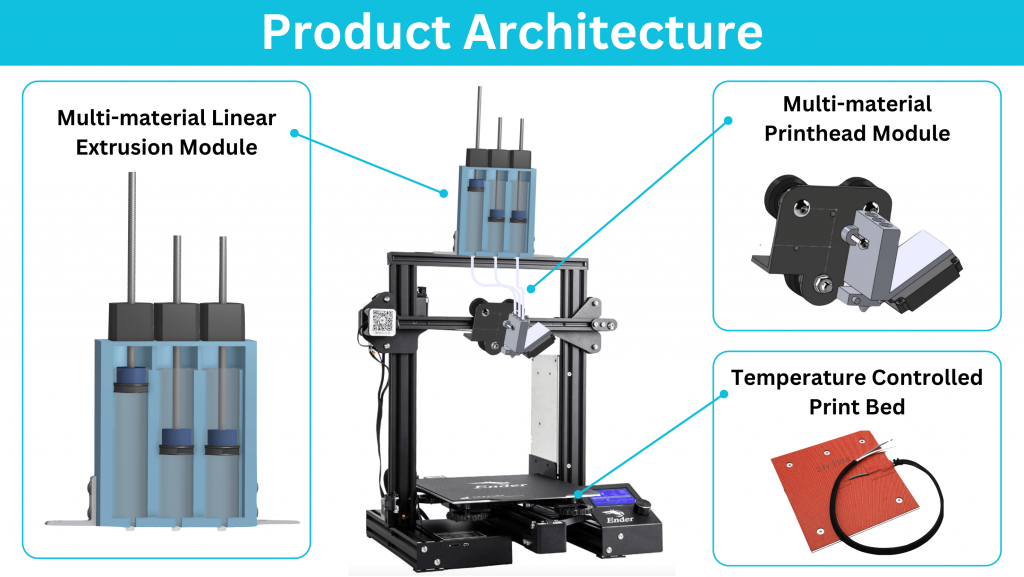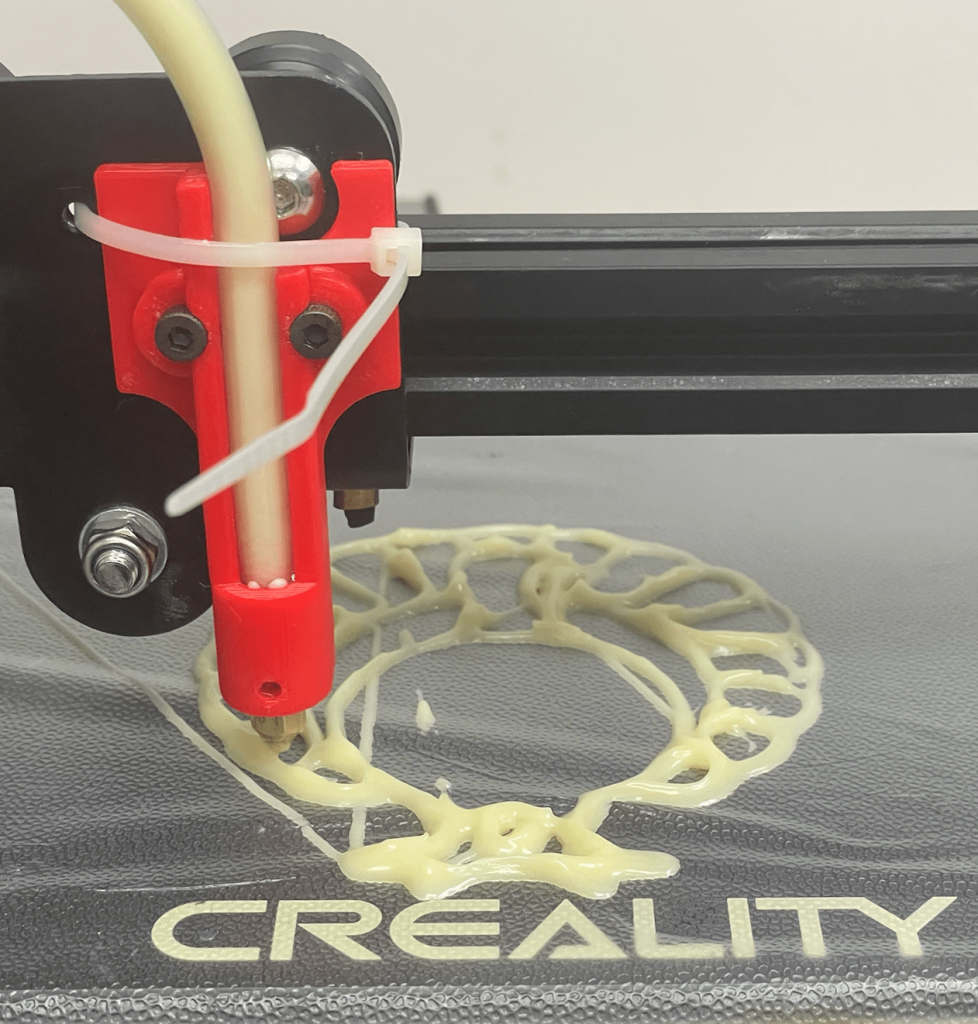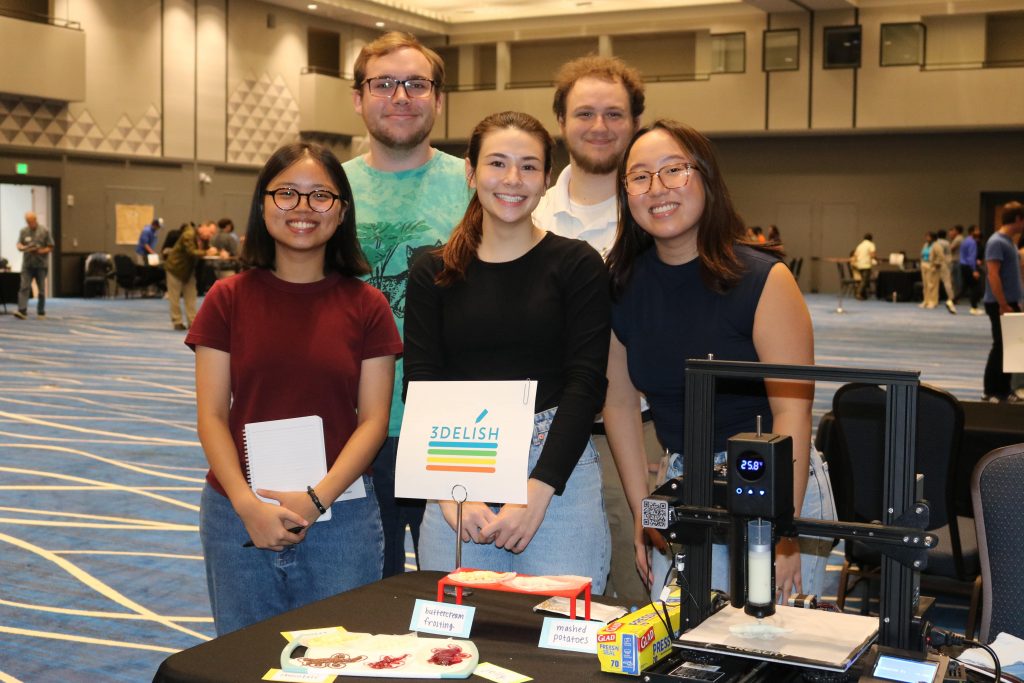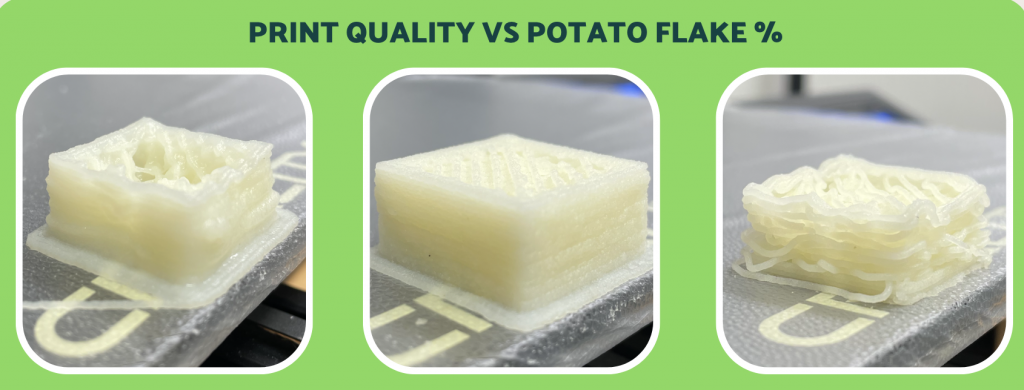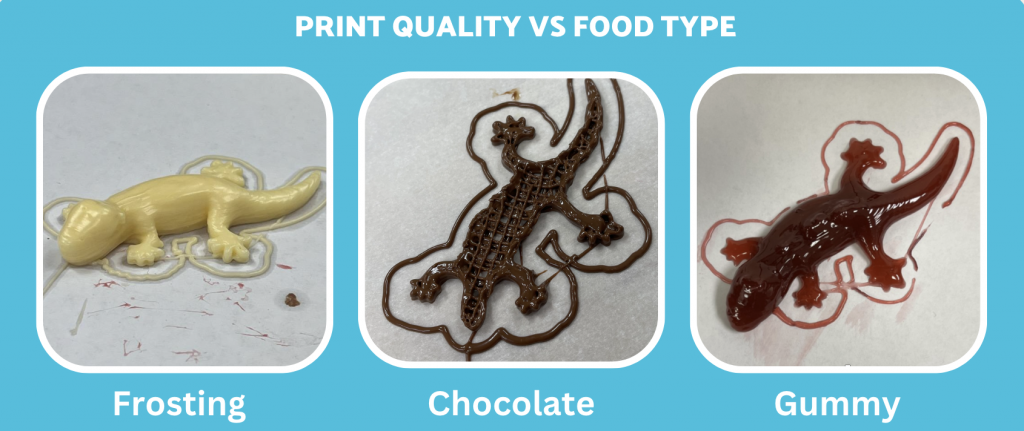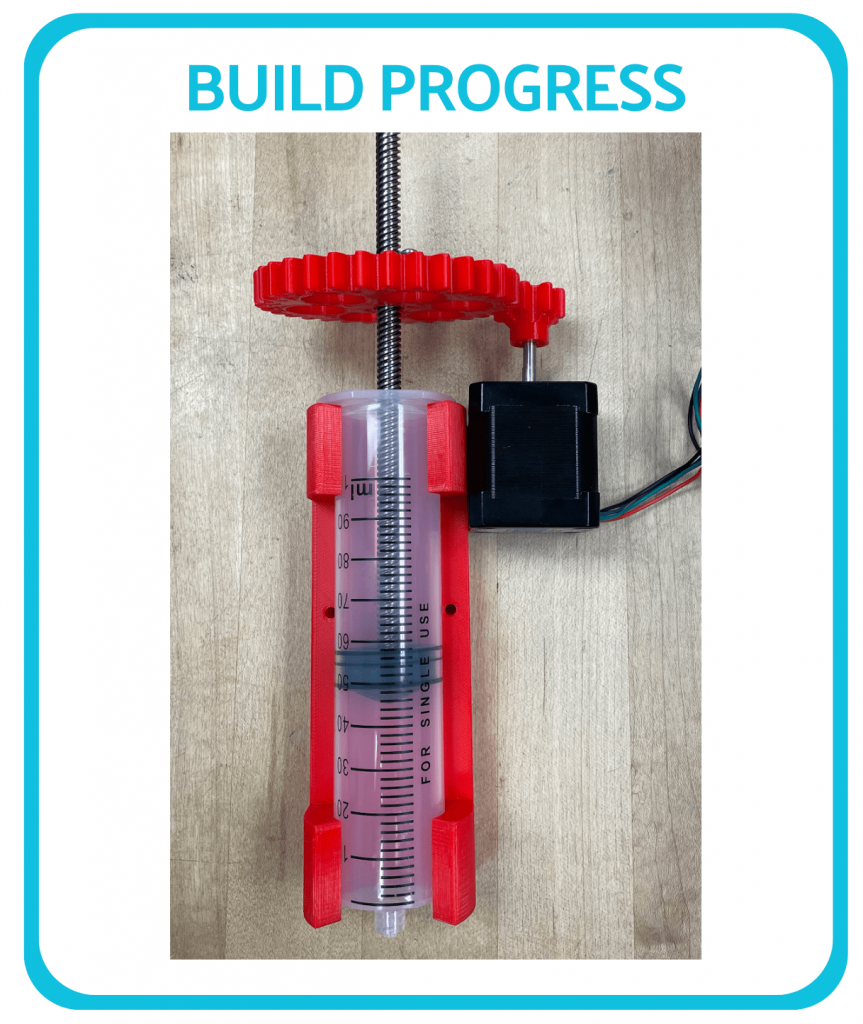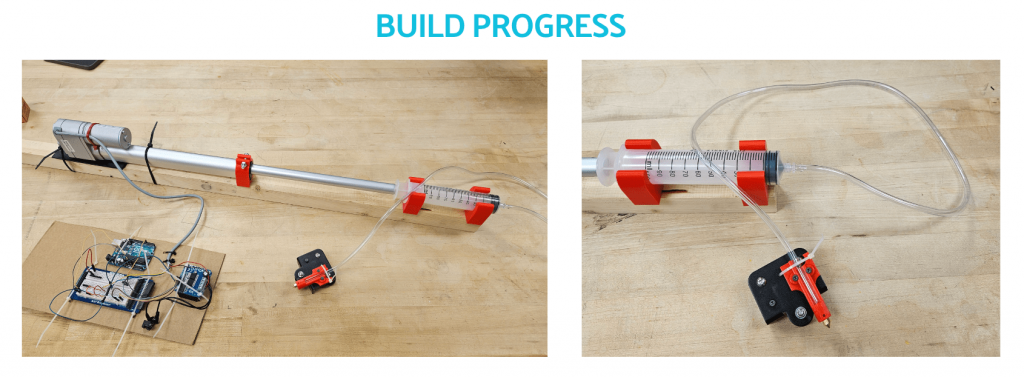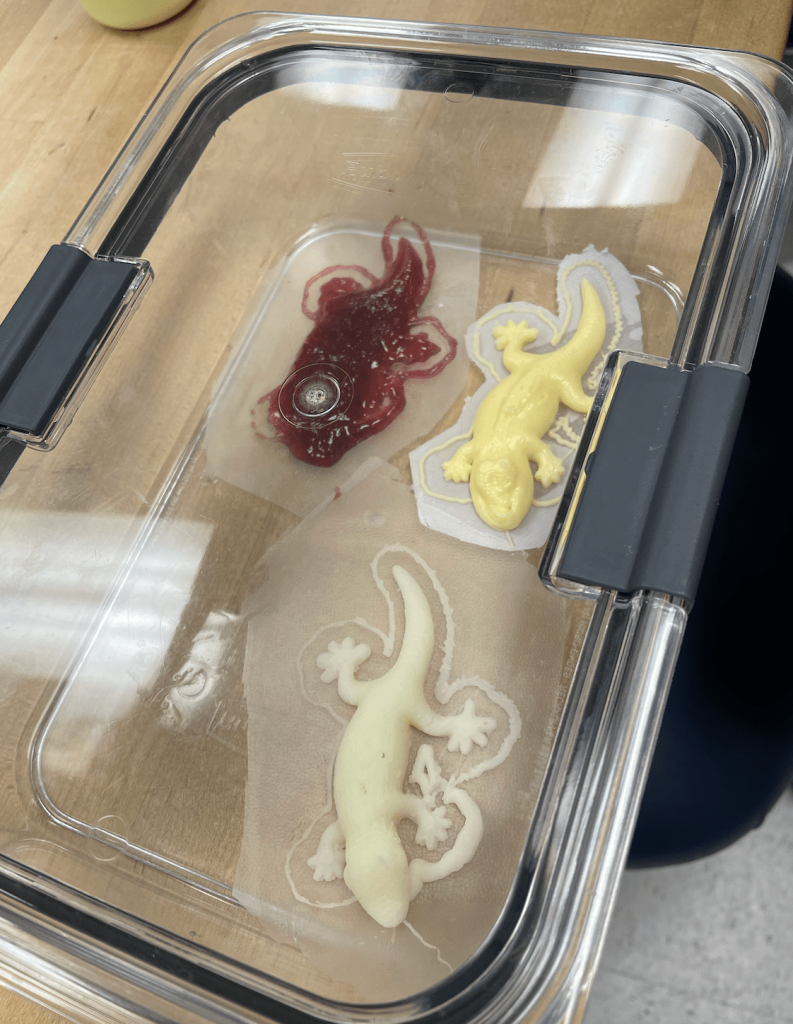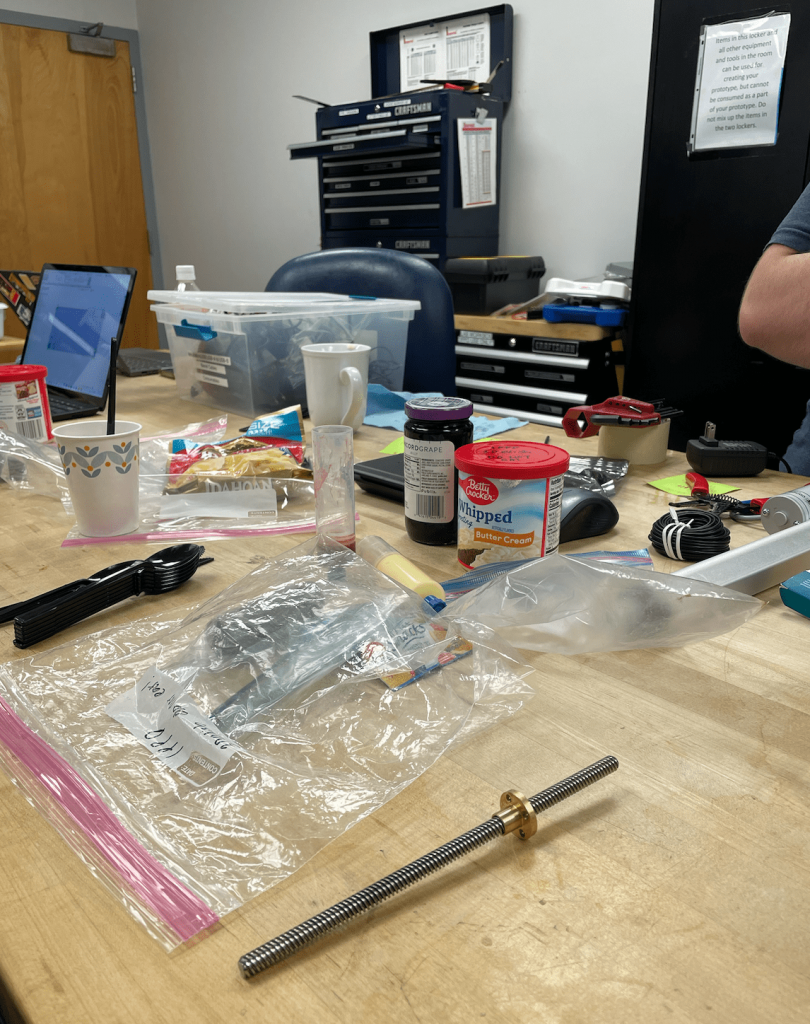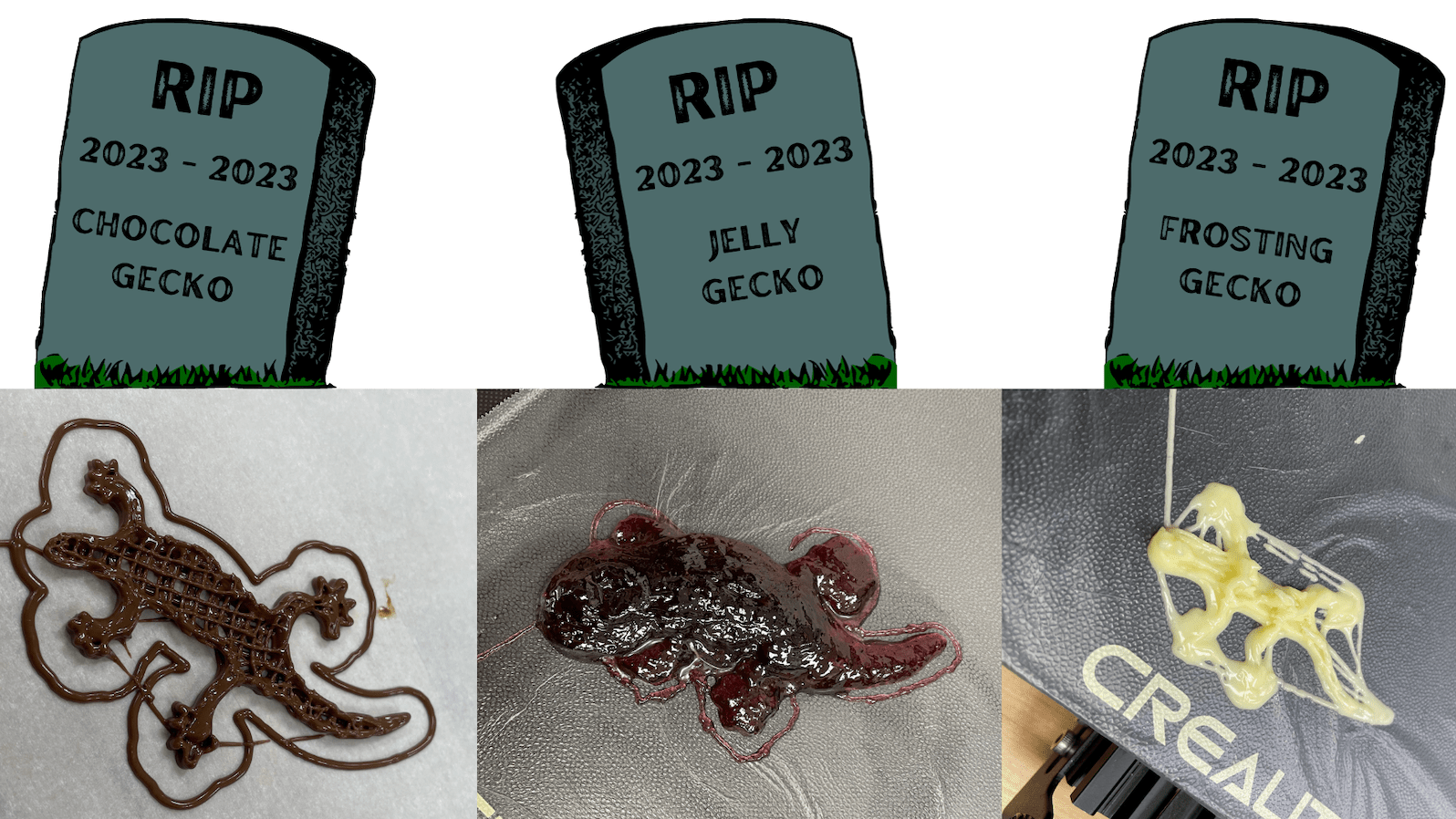This week, 3Delish is coming off of last week’s QRB hot and ready to get more of the prototype working. Each of the different main teams have been working diligently to further integrate all the different components of the project.
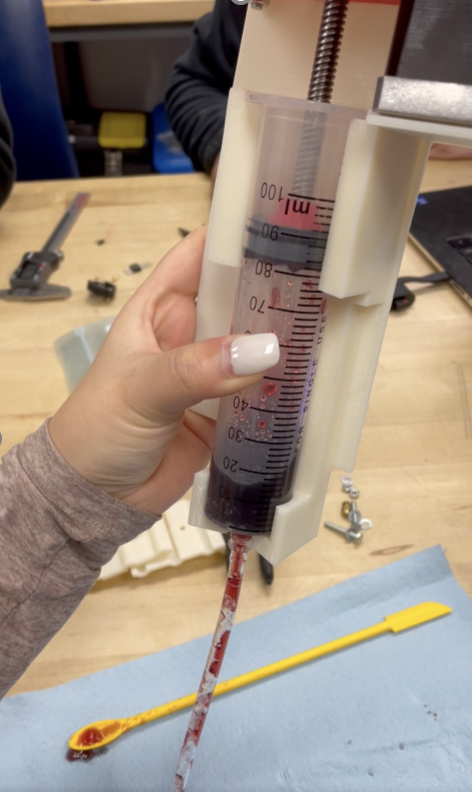
On the extrusion module side, Caylynne was able to finish assembly and began testing the gear assembly version of the extrusion module with jelly inside. The extrusion module team has also been busy ordering and will soon begin testing different non-captive motors.

Brittney has taken charge on testing some tubing insulation for the altered temperature requirement prints. Through some basic testing, she was able to show that the insulated tubing was able to keep hot water about 5 degrees C warmer than the tubing without insulation over a 20 minute time span.

Ian and Andrew have had a bit of a breakthrough with motherboard integration, and are now able to control the motors responsible for the X, Y, Z, E0, and E1 axises. Ian was also able to figure out and interpret the G-code possibilities, meaning we will be able to start multi-material testing soon after we get the extrusion module mounted and integrated.
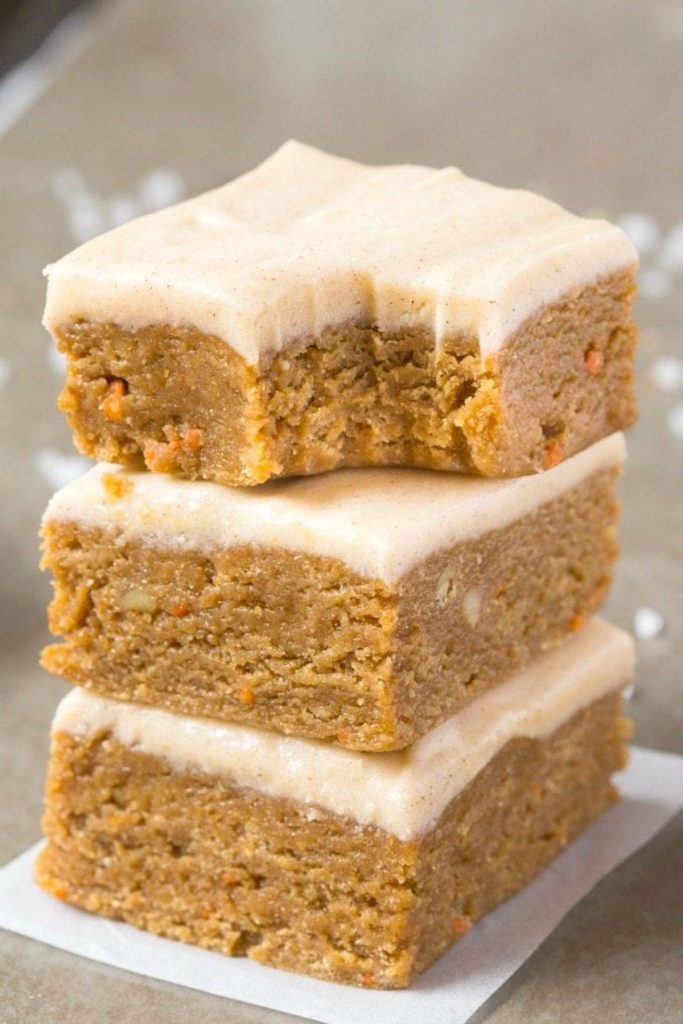
Lucas and Liying have stepped back from Instron testing for the time being now that the maximum force values have been attained, and have turned to researching different food materials they will be selecting for the final design and recipe. One popular candidate is the idea of a no-bake carrot cake bar with base of spiced no-bake cake batter, channels of carrot puree throughout, and a topping of cream cheese icing. Lucas also plans to test some of these recipes at home for the upcoming Super Bowl Sunday, where he has a crew of test subjects to see how these recipes might taste.

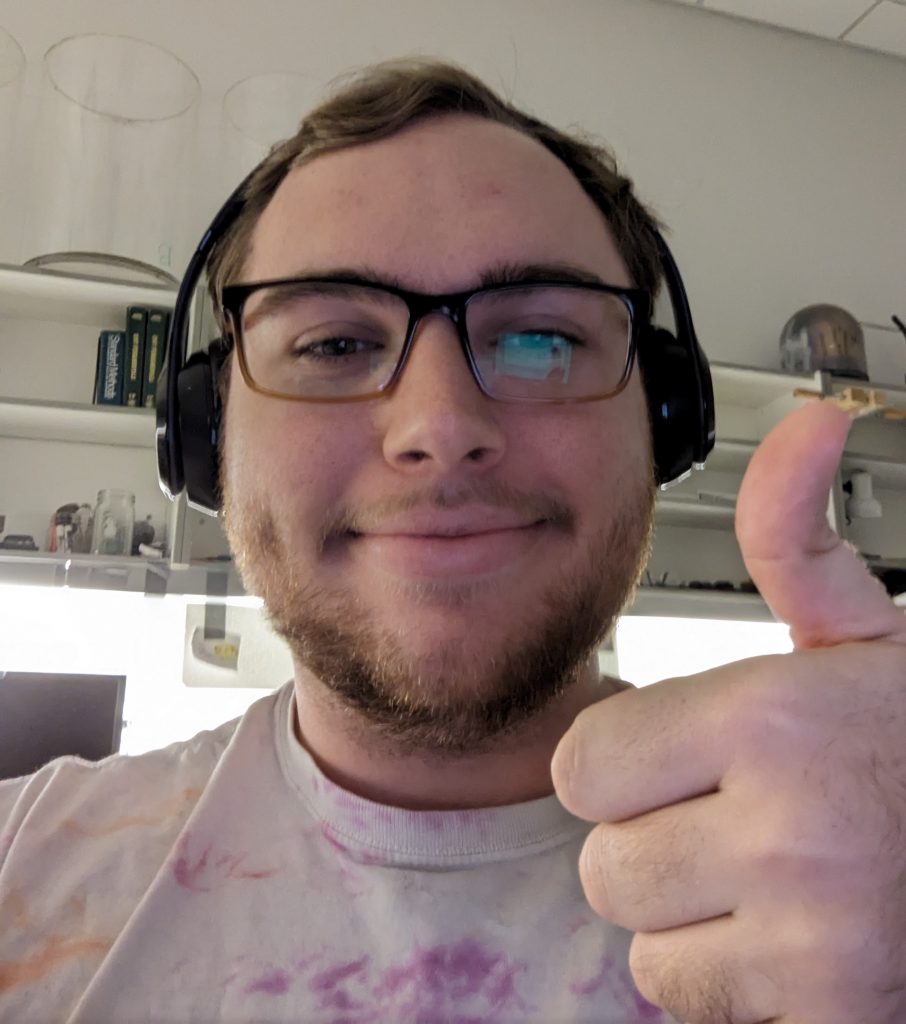
The team is excited to continue testing and integrating parts, with hopes to have a multi-material product completed in the next couple weeks!








